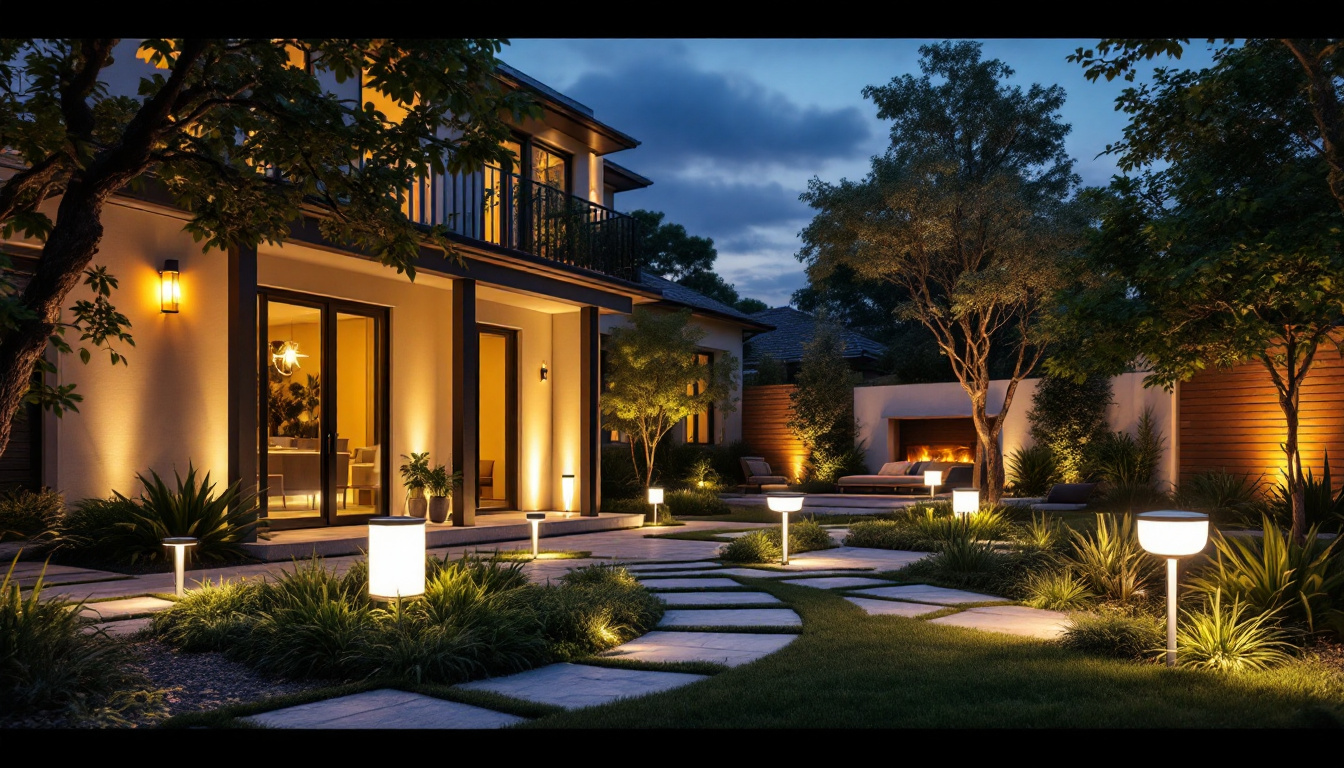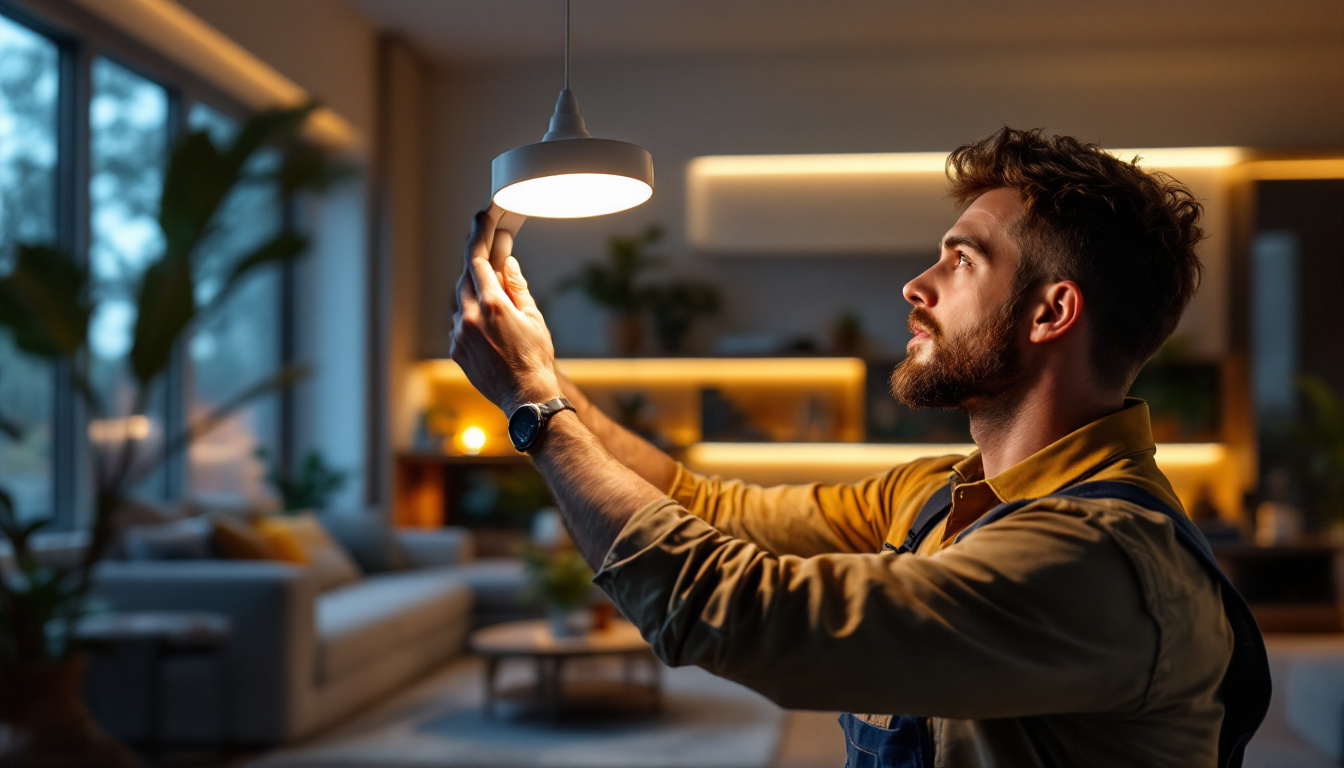
Lighting plays a crucial role in our daily lives, influencing not only the aesthetics of a space but also safety, functionality, and energy efficiency. For lighting contractors, understanding the various types of lighting and their compliance requirements is essential. This article delves into the different types of lighting, the importance of compliance, and what contractors need to know to ensure successful projects.
Lighting can be categorized into several types, each serving a unique purpose and contributing to the overall ambiance of a space. Familiarity with these types is vital for lighting contractors to meet client expectations and comply with regulations.
Ambient lighting, also known as general lighting, provides a uniform level of illumination throughout a space. It is essential for creating a comfortable environment and ensuring visibility. Common sources of ambient lighting include ceiling-mounted fixtures, chandeliers, and recessed lighting.
When designing ambient lighting, contractors must consider the size of the room, the height of the ceiling, and the color of the walls, as these factors can significantly affect light distribution. Additionally, energy efficiency should be a priority, with many contractors opting for LED fixtures to reduce energy consumption. The choice of color temperature can also influence the mood; warmer tones can create a cozy atmosphere, while cooler tones can make a space feel more open and airy.
Task lighting is specifically designed to illuminate areas where specific activities take place, such as reading, cooking, or working. This type of lighting is typically brighter and more focused than ambient lighting.
Examples of task lighting include desk lamps, under-cabinet lights in kitchens, and adjustable wall-mounted fixtures. Contractors should ensure that task lighting is positioned correctly to minimize shadows and glare, which can hinder visibility and productivity. Moreover, the use of dimmers can enhance task lighting by allowing users to adjust the brightness according to their needs, making it a versatile solution in multifunctional spaces.
Accent lighting is used to highlight specific features or objects within a space, such as artwork, architectural details, or plants. This type of lighting adds depth and visual interest, enhancing the overall design of a room.
Common sources of accent lighting include track lights, wall sconces, and spotlights. When implementing accent lighting, contractors should consider the intensity and angle of the light to create the desired effect without overpowering the ambient light. Additionally, color filters can be used to create dramatic effects, allowing for a more personalized touch that can transform a simple feature into a stunning focal point. The strategic placement of accent lights can also guide the eye throughout the space, creating a cohesive flow that enhances the overall aesthetic appeal.
Compliance with local, state, and national regulations is a critical aspect of lighting design and installation. These regulations ensure safety, energy efficiency, and environmental sustainability. Understanding compliance requirements is essential for contractors to avoid penalties and ensure client satisfaction.
Building codes dictate the minimum standards for construction and safety in lighting installations. These codes cover various aspects, including the type of fixtures used, wiring methods, and placement of lighting elements. Contractors must stay informed about the latest codes in their area to ensure compliance.
Failure to adhere to building codes can result in costly rework, fines, and even legal issues. Therefore, it is crucial for contractors to consult with local building authorities and stay updated on any changes to regulations. Additionally, engaging in continuous education and training can help contractors remain knowledgeable about emerging technologies and practices that may influence future building codes, thereby enhancing their expertise and marketability.
Energy efficiency standards aim to reduce energy consumption and promote sustainable practices. In many regions, lighting contractors must comply with regulations such as the Energy Policy Act or local energy codes that mandate the use of energy-efficient lighting solutions.
Contractors should be knowledgeable about the different energy-efficient technologies available, such as LED and fluorescent lighting, and be prepared to recommend these options to clients. Implementing energy-efficient solutions not only benefits the environment but can also lead to cost savings for clients in the long run. Furthermore, many utility companies offer incentives or rebates for the installation of energy-efficient systems, which can further encourage clients to opt for sustainable lighting designs and enhance the overall project value.
Accessibility standards, such as the Americans with Disabilities Act (ADA), ensure that lighting installations are safe and usable for individuals with disabilities. Contractors must consider factors such as fixture height, brightness levels, and the placement of switches and controls to comply with these standards.
By prioritizing accessibility, contractors can create inclusive spaces that cater to all individuals, enhancing the overall functionality and appeal of the project. Moreover, integrating smart lighting solutions can further improve accessibility by allowing users to control lighting through mobile devices or voice commands, thus accommodating various needs and preferences. This forward-thinking approach not only meets compliance requirements but also positions contractors as leaders in innovative and user-centric design practices.
To navigate the complexities of lighting design and compliance, contractors must equip themselves with the necessary knowledge and skills. This section outlines key considerations for lighting contractors to ensure successful project execution.
The lighting industry is constantly evolving, with new technologies, design trends, and regulations emerging regularly. Contractors should stay informed about these changes by attending industry conferences, participating in training sessions, and subscribing to relevant publications.
By keeping abreast of the latest trends, contractors can offer clients innovative solutions and maintain a competitive edge in the market. Networking with other professionals in the industry can also provide valuable insights and resources. Furthermore, embracing advancements such as smart lighting systems and energy-efficient solutions not only enhances a contractor’s portfolio but also aligns with the growing demand for sustainable practices in construction and design.
Successful lighting projects often require collaboration with architects, interior designers, and electrical engineers. Contractors should foster strong relationships with these professionals to ensure seamless integration of lighting into the overall design.
Effective communication is key to understanding project requirements and addressing any potential challenges. By working together, contractors and other professionals can create cohesive and functional lighting solutions that meet client needs. Additionally, involving specialists such as acoustical engineers can enhance the overall ambiance of a space, ensuring that lighting not only looks good but also contributes to the comfort and usability of the environment.
Before beginning any lighting project, contractors should conduct thorough site assessments to understand the unique characteristics of the space. This includes evaluating natural light sources, existing electrical systems, and the intended use of the area.
Site assessments allow contractors to develop tailored lighting plans that enhance the functionality and aesthetics of the space. Additionally, understanding the site conditions can help identify potential compliance issues early in the process, reducing the risk of costly delays. It is also beneficial to consider the psychological effects of lighting on occupants; for instance, warm lighting can create a cozy atmosphere in residential settings, while cooler tones may be more appropriate for commercial spaces that require focus and productivity. By taking these factors into account, contractors can ensure that their lighting designs not only meet technical specifications but also enhance the overall user experience.
Implementing best practices during the installation process is crucial for ensuring compliance and achieving optimal results. Here are some key practices that lighting contractors should follow.
Safety should always be the top priority during lighting installation. Contractors should adhere to safety guidelines and best practices to protect themselves, their team, and the clients. This includes using proper personal protective equipment (PPE), following electrical safety protocols, and ensuring that all fixtures are securely installed.
Additionally, contractors should conduct regular safety inspections throughout the installation process to identify and address any potential hazards promptly.
Proper wiring and connections are essential for the safe and efficient operation of lighting systems. Contractors should follow electrical codes and best practices when installing wiring, ensuring that all connections are secure and properly insulated.
Using high-quality materials and components can also enhance the longevity and performance of the lighting system, reducing the likelihood of future issues.
After installation, contractors should conduct thorough testing and commissioning of the lighting systems to ensure they operate as intended. This includes checking for proper functionality, adjusting light levels, and verifying compliance with relevant regulations.
Testing also provides an opportunity to address any issues before the project is completed, ensuring client satisfaction and reducing the likelihood of callbacks.
Understanding the various types of lighting, compliance requirements, and best practices is essential for lighting contractors to succeed in their projects. By staying informed about industry trends, collaborating with other professionals, and prioritizing safety and quality, contractors can deliver exceptional lighting solutions that meet client needs while adhering to regulations.
As the lighting industry continues to evolve, contractors who embrace innovation and prioritize compliance will be well-positioned to thrive in an increasingly competitive market. By investing in their knowledge and skills, lighting contractors can ensure their projects are not only compliant but also enhance the spaces they illuminate.
Ready to elevate your lighting projects with compliance, quality, and cost-efficiency? Look no further than LumenWholesale. Our extensive range of spec-grade lighting products is designed to meet the highest industry standards, providing you with the reliable, high-performance lighting solutions you need. With unbeatable wholesale prices and the convenience of free shipping on bulk orders, LumenWholesale is your go-to source for superior lighting without the inflated markups. Discover the best value in wholesale lighting and make your next project shine with LumenWholesale.

Discover the innovative strategies smart lighting contractors use to enhance outdoor spaces with LED fixtures.

Discover innovative and eco-friendly solutions with our guide on front door solar lights tailored for lighting contractors.

Discover the essential insights lighting contractors need for successful LED can light retrofits.

Discover essential insights and expert advice for lighting contractors in our comprehensive guide on Light Bulb Depot.